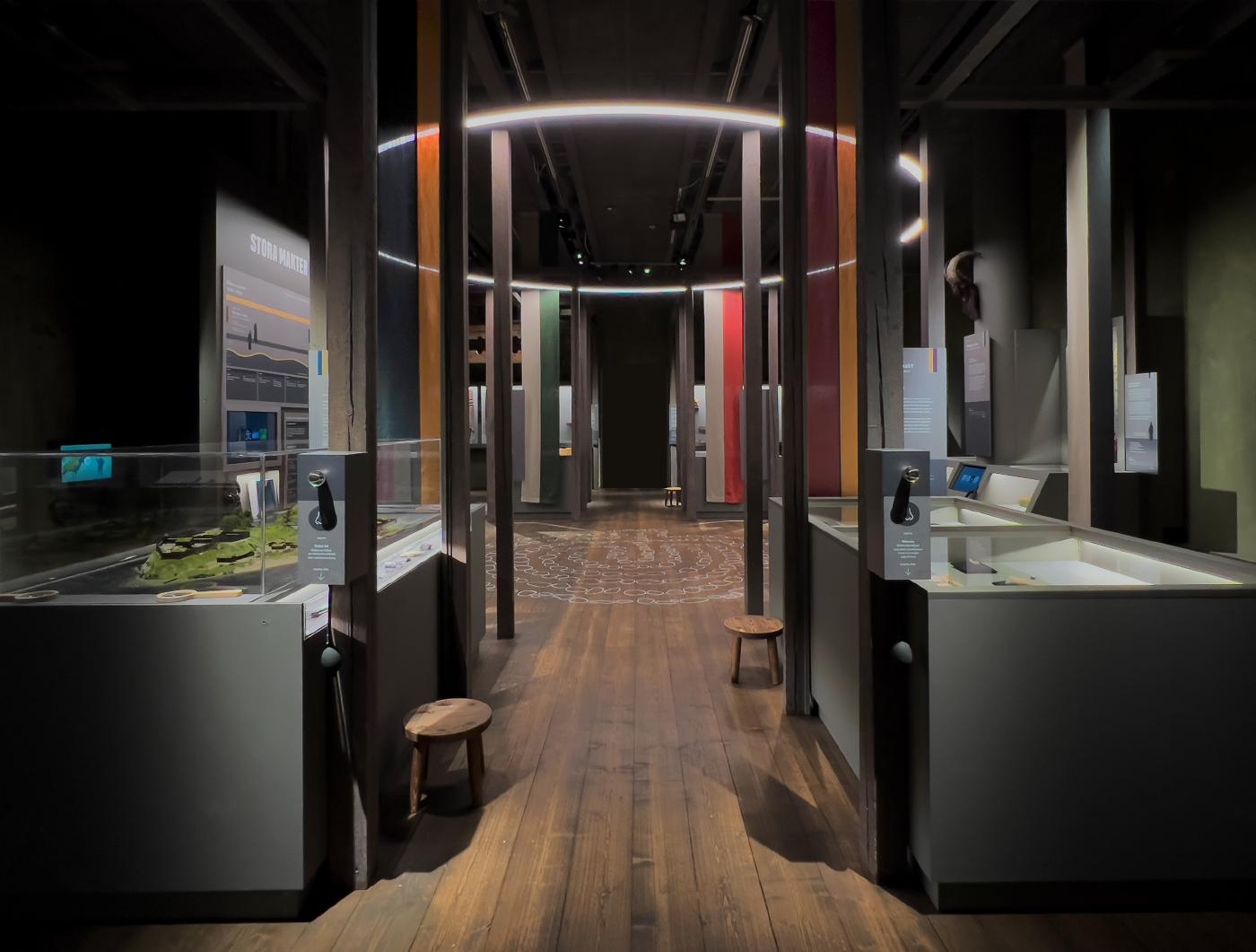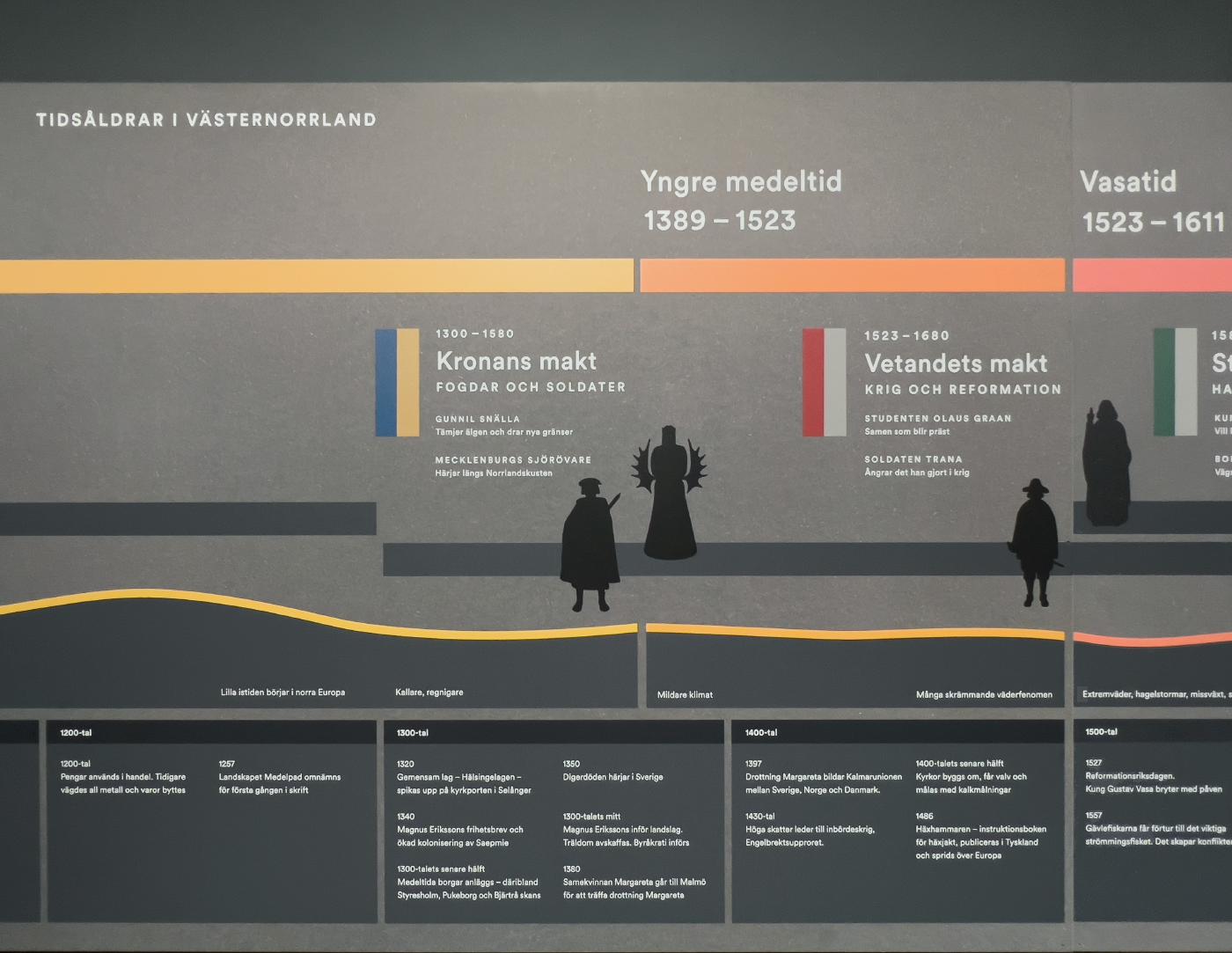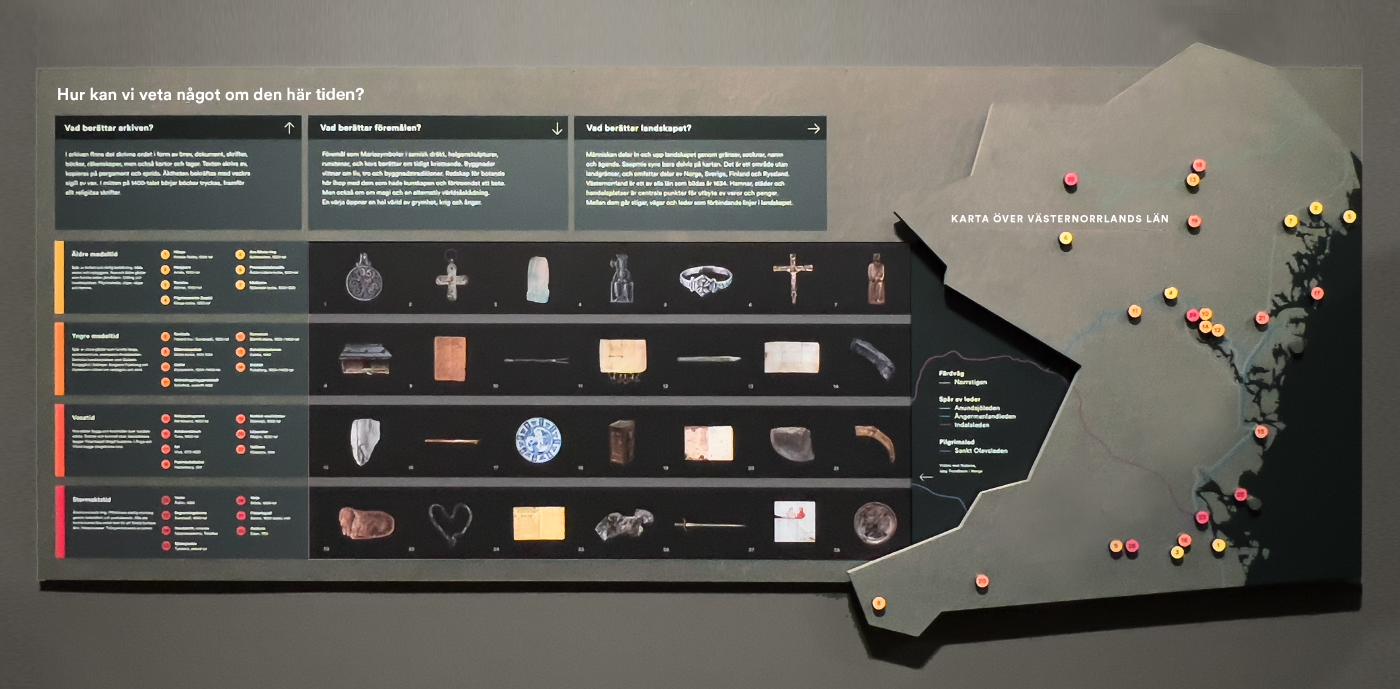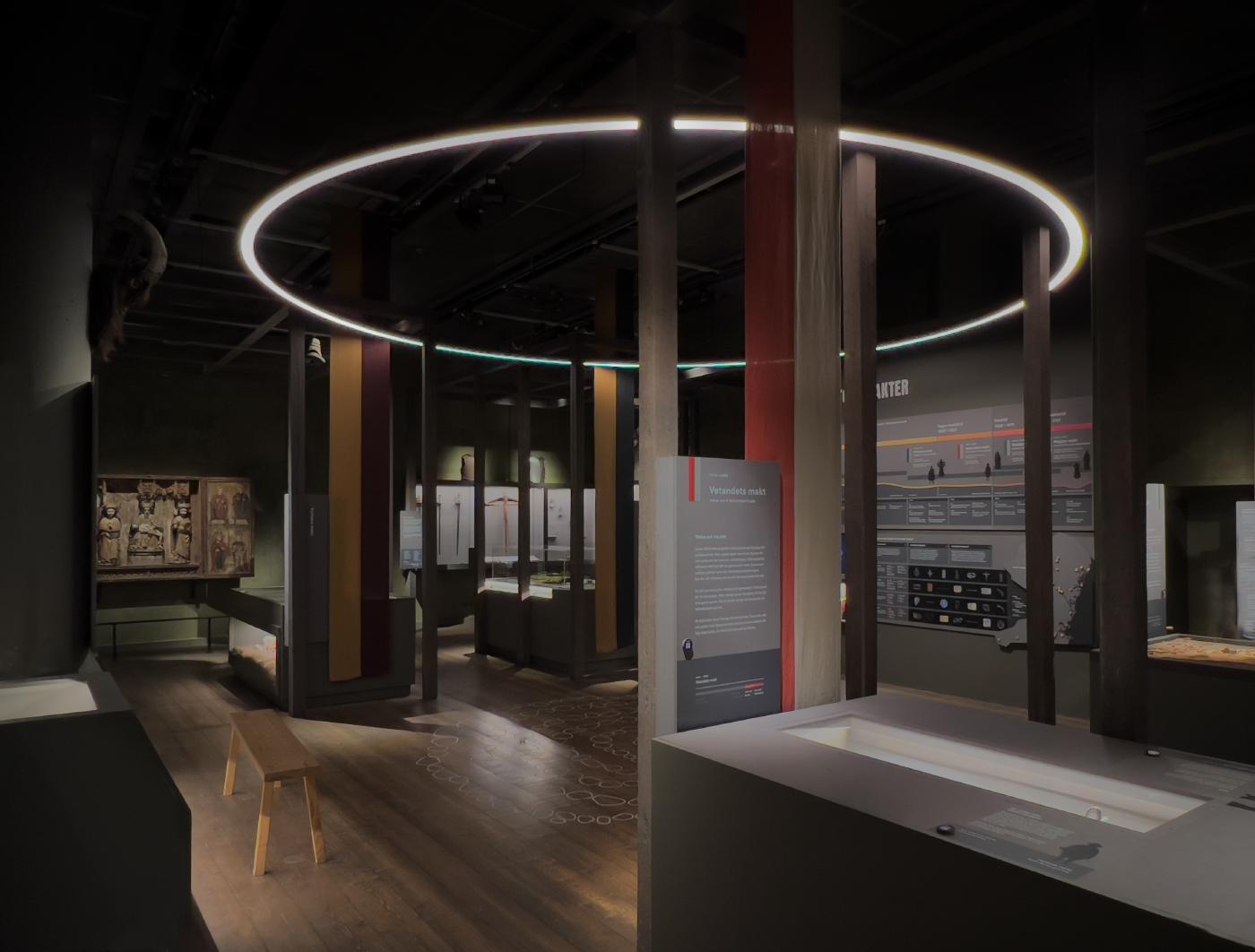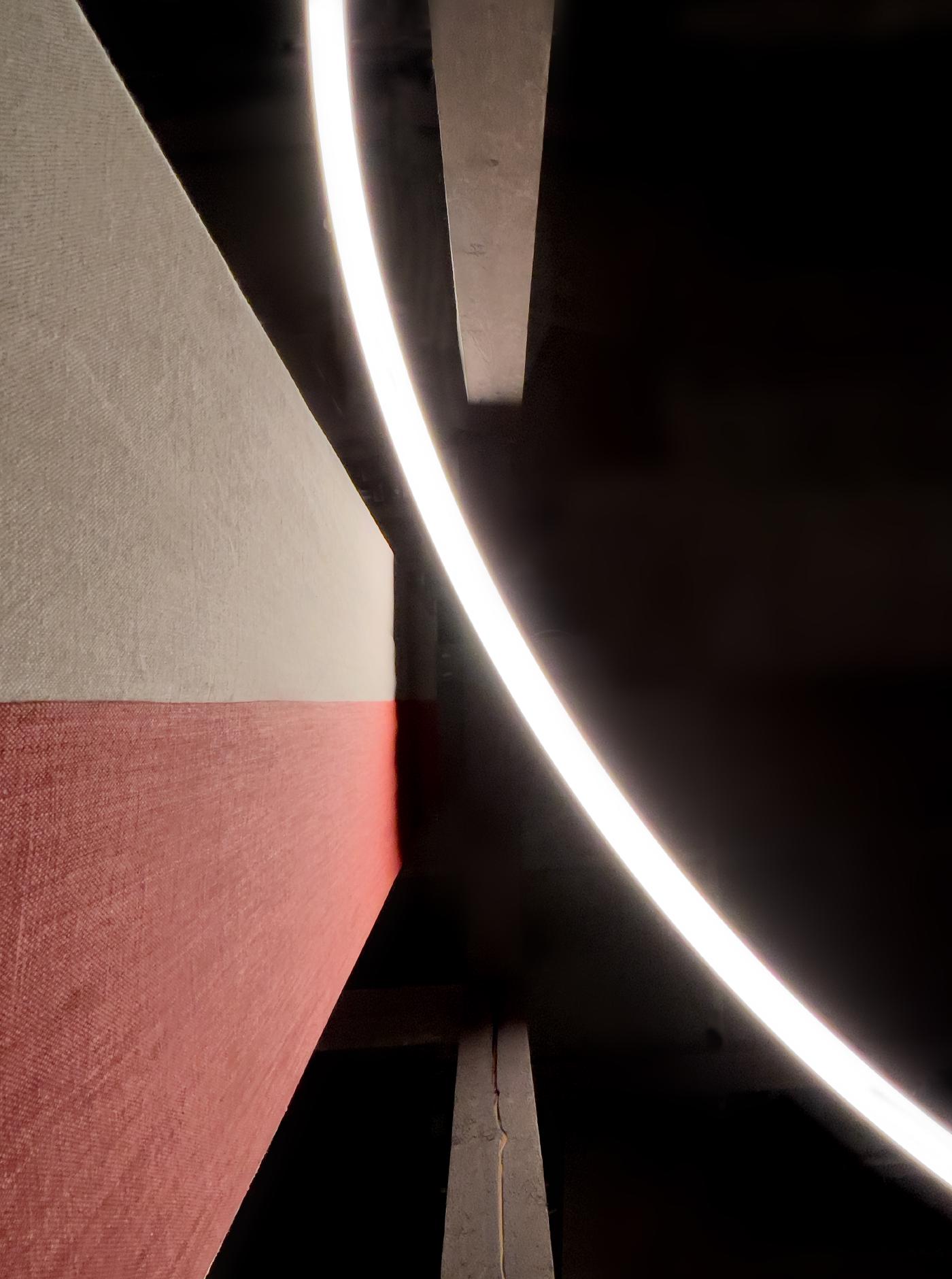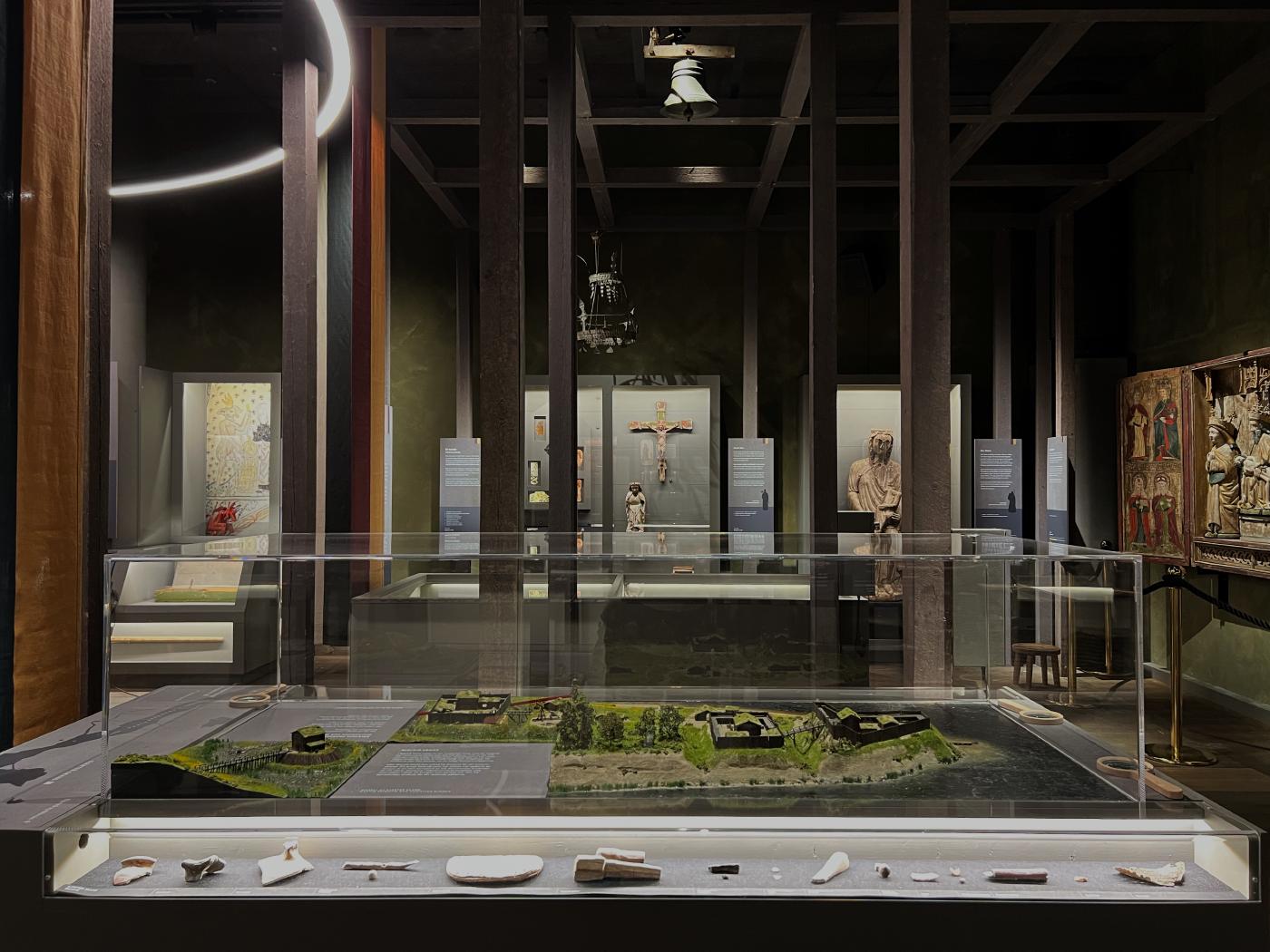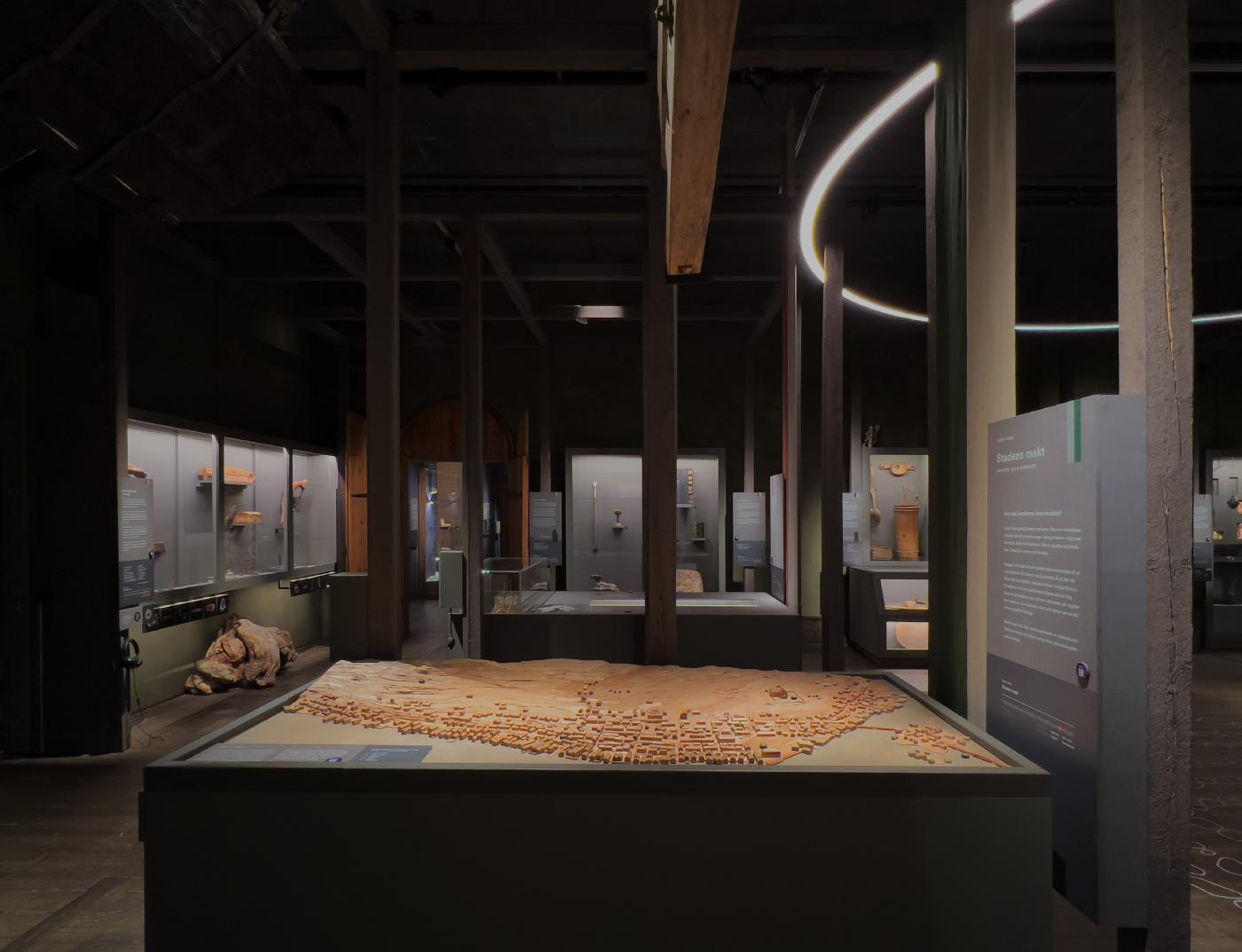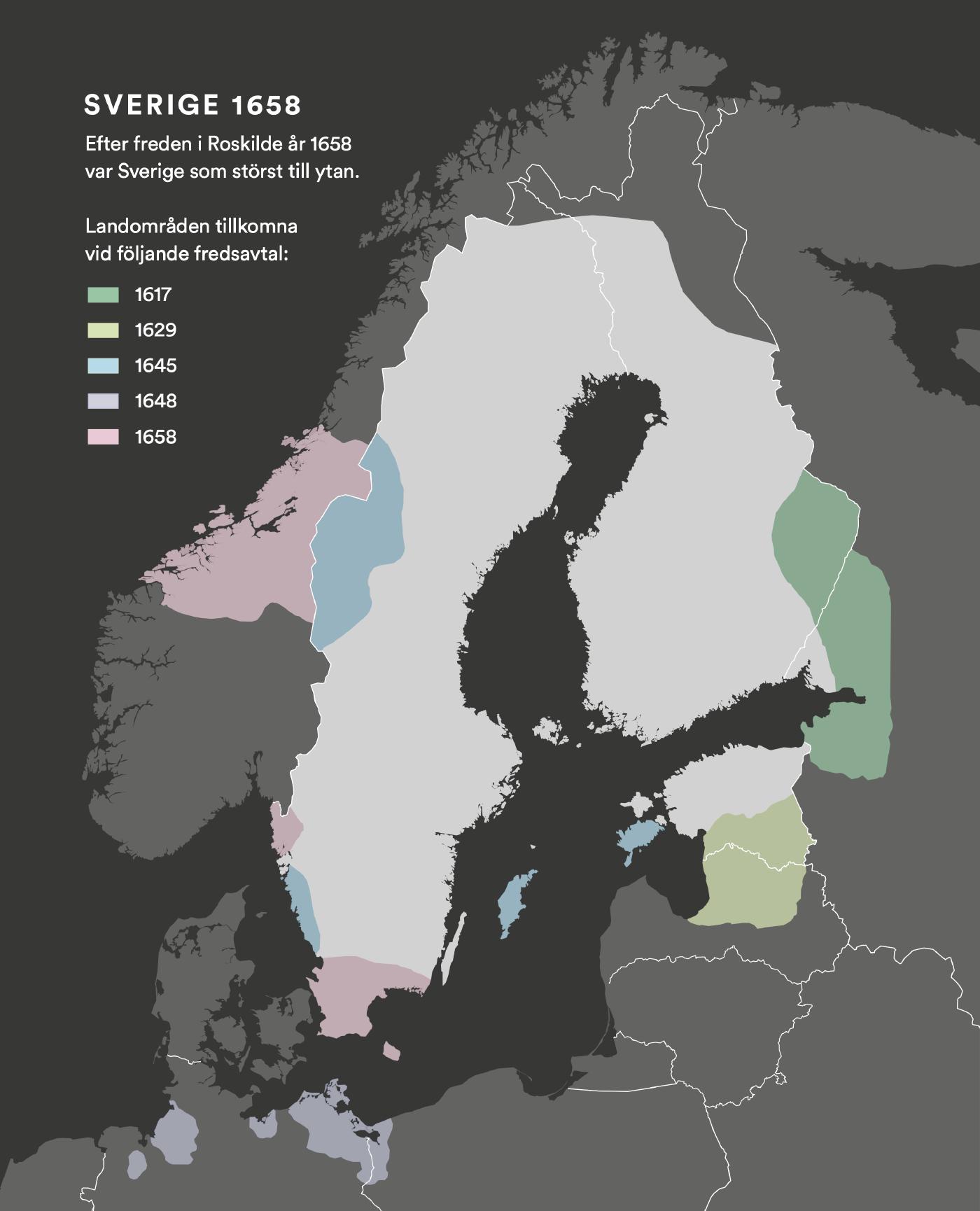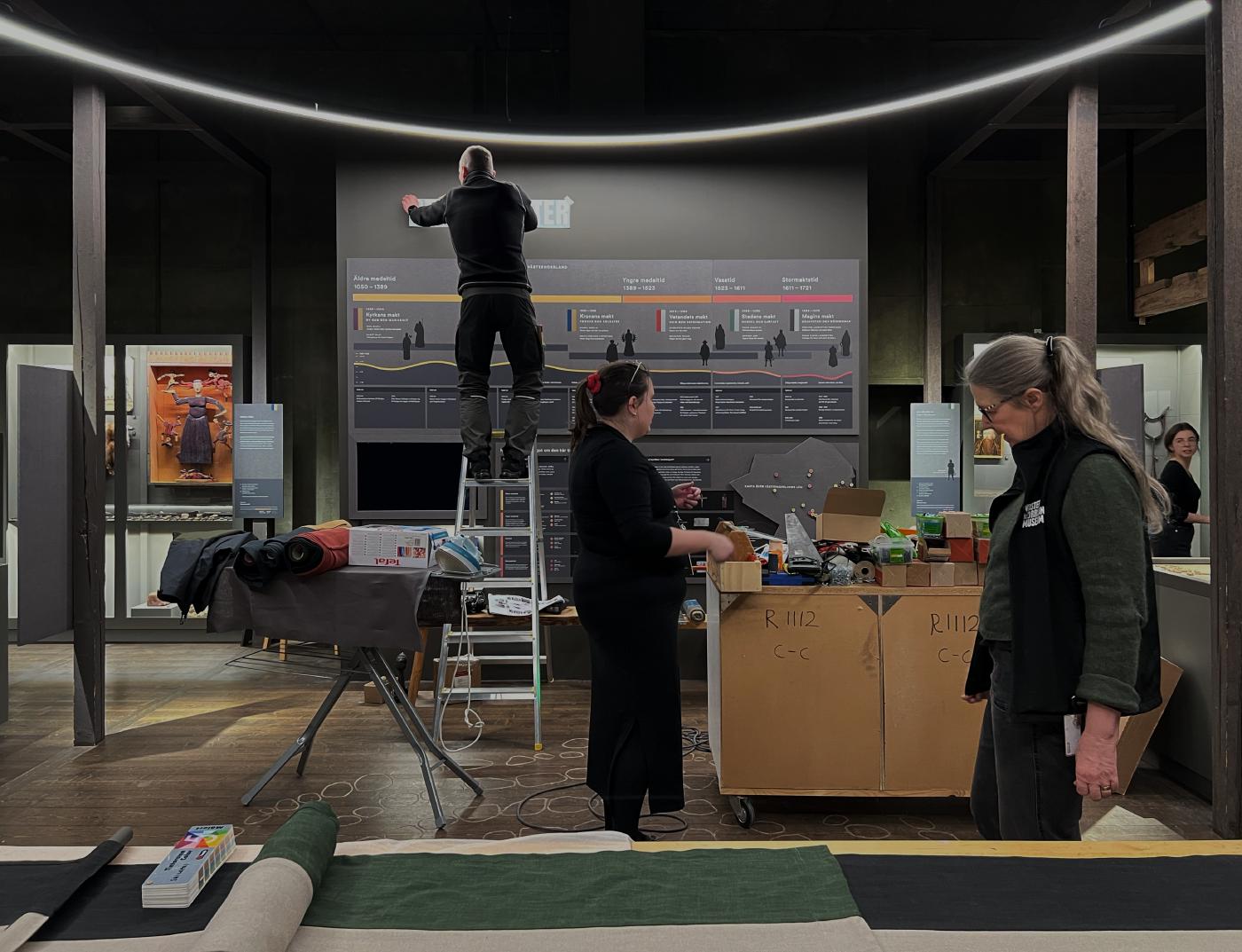Great powers
Västernorrlands museum
New gods, new borders, new battles
Ten medieval personal destinies tell the story of emerging powers taking control of forests, mountains and people.
Stora Makter (Great Powers) is a permanent history exhibition about the Middle Ages in Västernorrland, 1050 to 1680. The time when outside powers increasingly began to control and tax this area – the hunting in the forest, the fishing in the river and the trade across the sea.
How the Power of the Church, the Power of the Crown, the Power of Knowledge, the Power of the City and the Power of Magic shaped life is depicted in the exhibition’s five parts. Each part is brought to life by two authentic personal life stories from different sides of each power spectrum. But the local people resisted the new powers, both with words and weapons – and ancient local customs therefore live on into our time.
AO was commissioned to design the entire exhibition and propose a game that captured the conflict between the new and the old. Floor plans and pillars have largely been kept from the original 1994 exhibition, but other parts have been reworked from the ground up to convey knowledge, research and findings that have emerged since then.
The room is laid out like a cross, with rustic pillared halls for each theme at the four corners, enclosing a floor display for models of cities, castles and ships. In the center of the cross, two walls face each other, one shows a timeline that provides an overview and in-depth information and the other tells about the witch trials during the 17th century where at least 300 people lost their lives – the amount is unique in Sweden.
A large circle of light in the center of the room runs through all the pillared halls and ties all the themes together. Visitors are drawn in by the circle of light and five floor-to-ceiling linen banners — a representation of great powers surrounding you.
Under the circle of light, a labyrinth has been carved into the wooden floor, or trojeborg as these ancient finds are often called. It is a central part of a UV light-based game where the goal is to find and combine the hidden symbols of the resistance – an experience not yet realized in the room.
The circle of light in the center of the room is the exhibition's obvious starting point. From here, visitors can find out about the room's various themes and stories. In the foreground are pillared halls and floor displays for the theme of the power of the Crown and the power of the Church. Beyond the floor labyrinth, the corresponding parts for the power of the City and the power of Knowledge can be seen.
On the floor plan, you can clearly see how the grid of the pillared halls and the circle of light intertwine. When updating the thirty-year-old exhibition, half of all pillars were removed to simplify flows and increase accessibility. Behind the timeline (top center) is a room for films aimed at children and a room with a mechanical automata with a sea monster inspired by Olaus Magnus’ Carta Marina from 1539.
The timeline provides an overview and collects the exhibition's themes and gallery of people. The vertical bands of color for each theme reappear on signs and in hanging textiles. There is also the dedicated space for deeper knowledge to explore here through objects, finds, films and various publications collected in a small library.
Detail of the timeline with eras and theme names. Two authentic personal stories portray the breadth of each theme, which is deepened with texts and objects in the exhibition space. A climate curve and key events from each century provide the big perspectives.
How can we know anything about this time? Through a few well-chosen objects from the exhibition, it is explained how archives, locations and objects give us different kinds of knowledge. Location, object and era are color-coded onto the map, showing that people moved along coasts, rivers and pilgrimage routes.
The circle of light runs in and out between solid pillars and transparent textiles and thus ties the room together. A place to gather groups, but also a place to reflect on which powers govern our lives.
The circle of light was custom made to pass just inside the outer posts of the four pillared halls, a total of 5295 mm in diameter. The left four centimeters between the circle and the floor stand to hang the textiles from ceiling to floor. The textiles are of two tones of linen and serve as navigation in the room where each theme has its own two color combination.
In the foreground, the theme of the power of the Crown is visible with models of the towns of Styresholm and Pukeborg, as well as objects from excavations there. In the background is the theme of the power of the Church, with sculptures in polychrome wood.
In the foreground, the theme of the power of the City can be seen with a model of 17th-century Härnösand. In the background is the theme Power of Knowledge, with objects from folk beliefs and folk medicine as well as the tools of the competing, new sciences.
The Skeleton Field is the name of one of the first burial places in Ångermanland with Christian burial customs. It dates to the 11th century and the finds are displayed here using a replica of a skeleton.
The power of Magic tells of the witch trials in which at least 300 people lost their lives – mostly women. Preserved documents show that simple everyday objects were used as evidence that the women were in collusion with the Devil. Visitors can access these documents and other in-depth information in the embedded screen.
View from the power of the City theme along the timeline towards the power of the Crown and parts of the museum's extensive weapon collection from the Middle Ages and Great Power era.
When Sweden was at its greatest. One of several maps produced for the exhibition. Like the other signs it is printed in white and full color directly on solid dark colored mdf board.
Items taken from folk medicine and folk beliefs in the theme the Power of Knowledge. Below the stand is a row of reversible signs that allow visitors to guess what they are seeing before turning the sign over for the answer.
A picture from the day before the opening. Texts are mounted and linen is ironed and hung.
From the opening of the exhibition in December 2022. In the foreground, the scent stations can be seen mounted on pillars, an appreciated element in every theme. With a press of a rubber puff, we end up directly in the world of medieval fragrances – for better or for worse.

